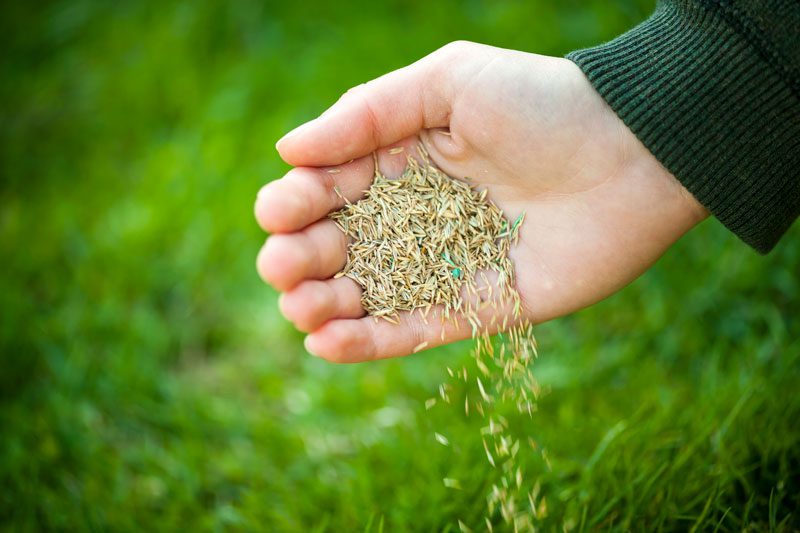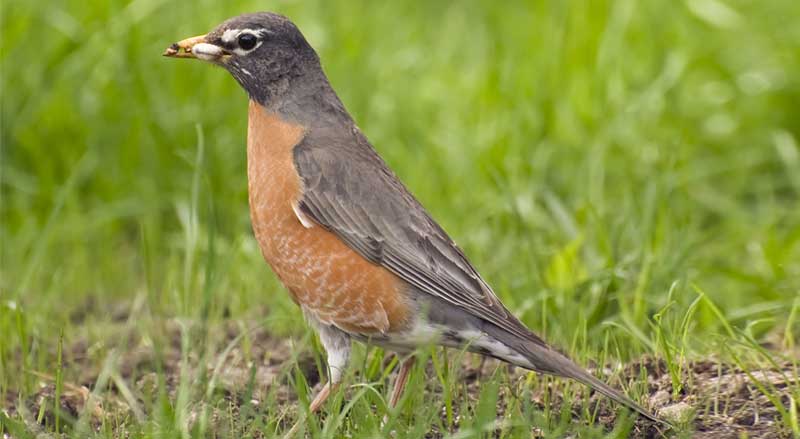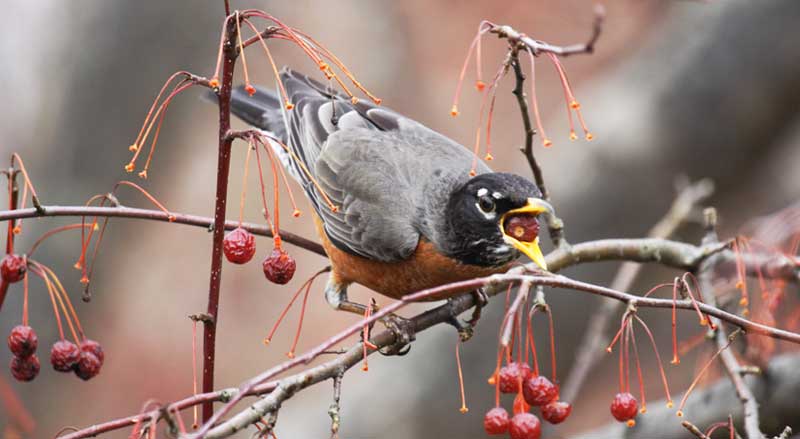Overseeding is an essential maintenance practice meant to produce a beautifully lush lawn. It’s a common lawn-care task to complete when your lawn turns thin, brown, and patchy. It typically entails spreading grass seed onto your current lawn to fill the gaps and bare spots in the sod. The benefits of overseeding are many.
When is the Best Time for Overseeding a Lawn?
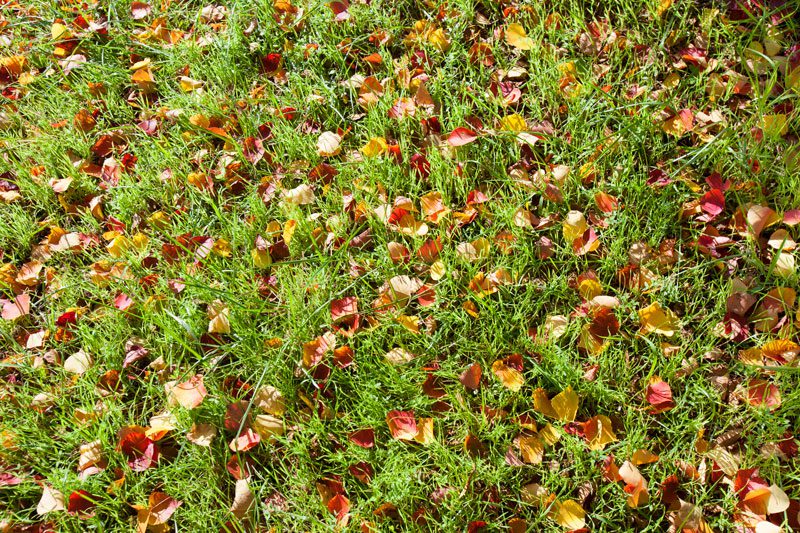
Overseeding is a common practice used on lawns that are losing some of their life. However, there is also a common time of year where this practice will benefit your lawn the most. In order to make sure your lawn never loses its fullness, try seeding 45 days before the first frost.
Once the snow is gone and the sun is out, overseed again at the beginning of spring. Apart from giving you a lush and low maintenance lawn, overseeding will provide your landscape with a host of additional benefits such as:
Erosion Reduction - An Important Benefit of Overseeding
Overseeding guarantees you a thicker lawn. A dense yard of grass effectively holds soil and water in place, reducing run-off and soil erosion. This improves your lawn’s health by allowing it to contain moisture and nutrients.
Increased Lawn Thickness
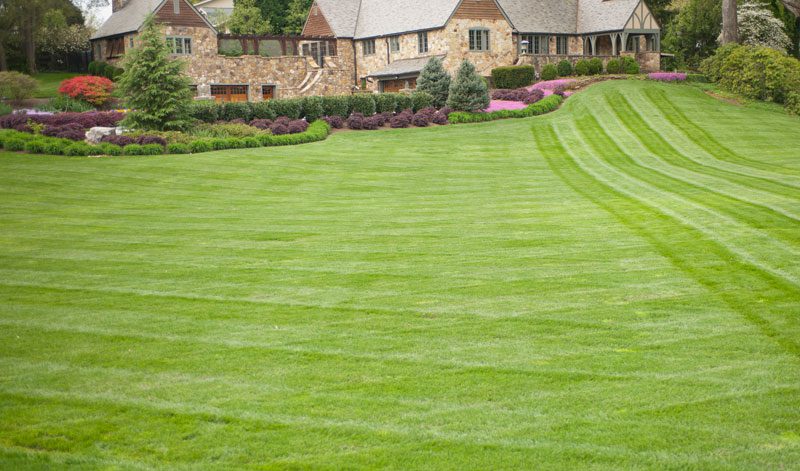
Looking to increase your lawn’s thickness? Overseeding does just that by increasing the fullness of thinner lawns. Seeding new seeds over your existing lawn with correct watering will help fill in gaps. This will give your home the lushest stretch of green it’s ever had. Thick and robust lawns are more durable and create fewer hazards.
Minimized Risk of Pests and Diseases
Maintaining a healthy lawn is the best way to combat pests and disease attacks. Apart from ensuring proper watering of your grass, creating the healthiest lawn can be achieved by overseeding. When it comes time to overseed, consider seed types based on their benefits.
Seeds that thrive well in your area, provide disease resistance, and demand minimal watering, are beneficial options to look for. By choosing the right seeds, you’ll be able to grow a lawn that’s not only healthy and vibrant but also fights pests and disease.
Eliminate Chemical Usage
Overseeding produces a healthy, robust lawn. For that reason, you don’t need to apply pesticides or chemical fertilizers. Overseeding combined with simple maintenance routine, deny pests a chance to destroy your lawn. This landscaping best practice will give you a thicker and healthier lawn while reducing or eliminating the need to use fertilizers.
Overseeding Improves the Lawn’s Appearance
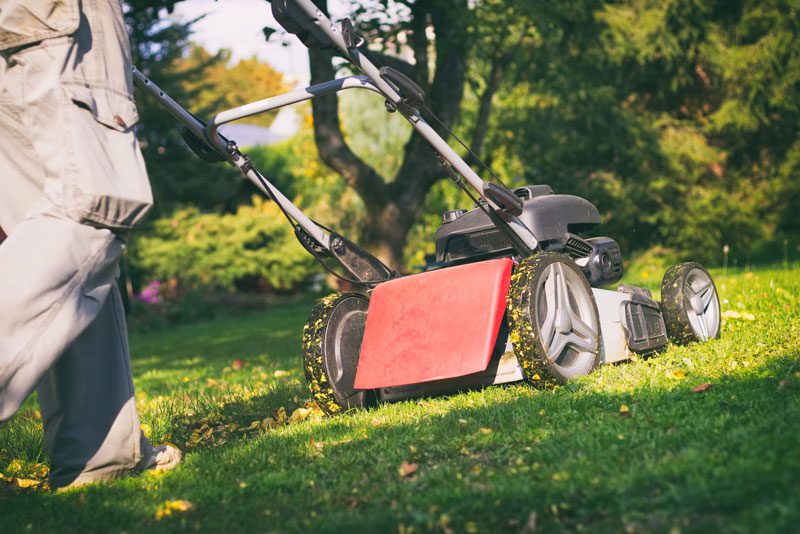
By overseeding, you can fill in the areas of your lawn damaged by pests and pets. A densely grown lawn is not only pleasing to the eye and feels great underfoot but provides durability. A landscape teeming with healthy grass can withstand more foot traffic while still looking great!
Would you like to improve the health and appearance of your lawn? Contact our team today for quality commercial and residential landscape solutions.

